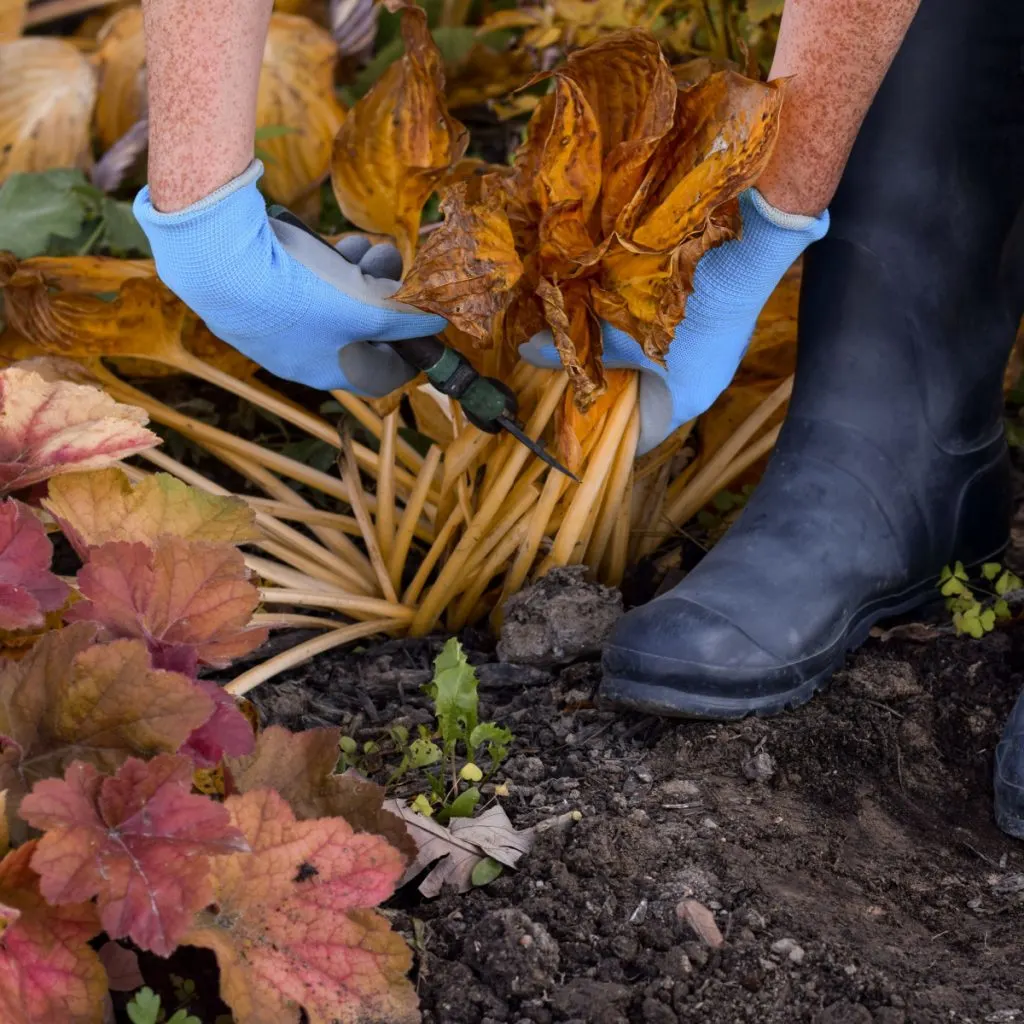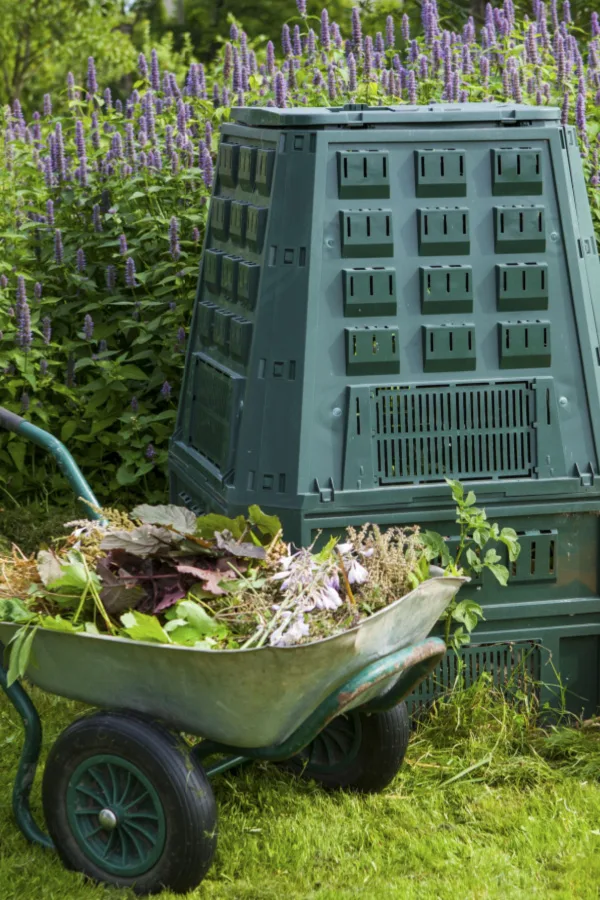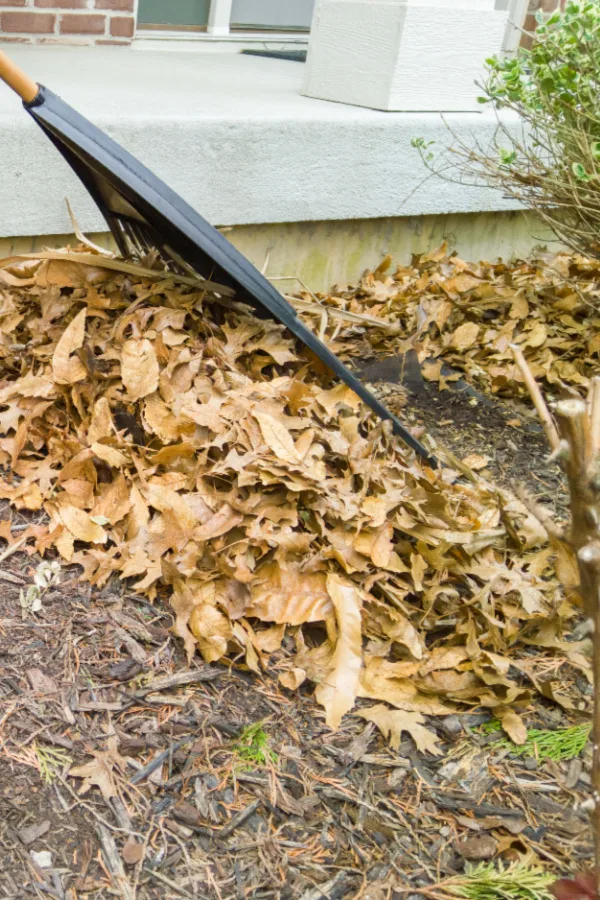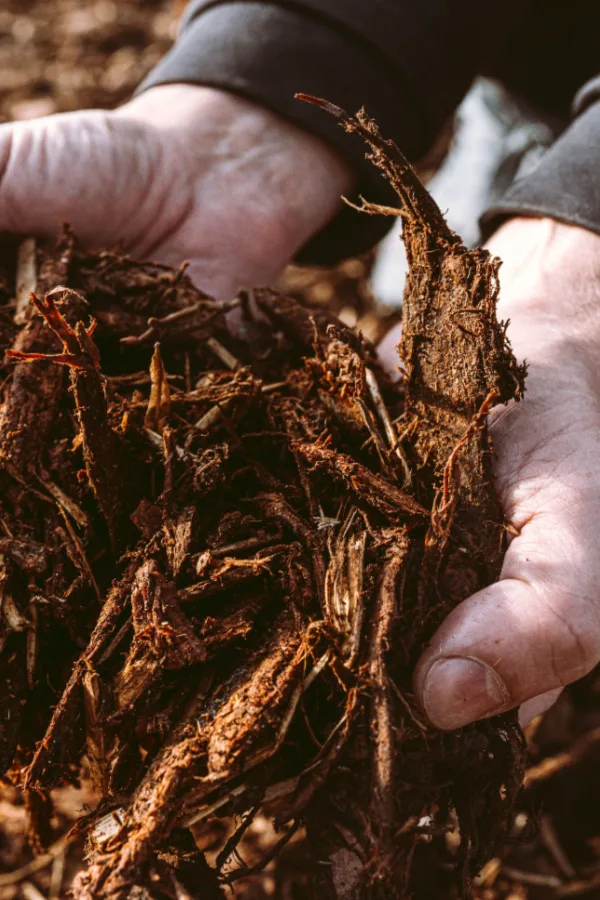Did you know that one of the best ways to have fewer weeds, healthier plants, and bigger and better blooms in your flowerbeds next year is to properly prepare them for winter in the fall?
It’s true! Getting your flowerbeds ready for winter this fall not only helps plants survive the upcoming cold, snow and wind that winter will bring, but it can also help keep pests and disease at bay. Even more, it also sets the stage for keeping weeds from ever becoming an issue next year as well.
The best news of all? It doesn’t need to take a lot of time or effort. In fact, with just three simple chores this fall, you can have your beds protected – and ready to grow and bloom like crazy next spring and summer.

How To Prepare Flowerbeds For Winter – 3 Must Do Chores To Do Before Winter Arrives!
#1 Cut Back Perennials
One of the biggest mistakes gardeners make with their flowerbeds in the fall is not cutting back the stems and leaves on their herbaceous perennials – which are perennial plants whose foliage dies back at the end of the growing season.
Leaving dying and decaying foliage in flowerbeds all winter long is asking for trouble. First and foremost, it leaves beds unsightly. But even more, allowing it to remain provides a place for disease and pest infestations to take hold in the dead plant material. And then – they simply lie in wait to come back next spring to attack plants.
The ideal time to cut back perennials is after the first hard frost, which signals the end of their active growth period. The frost also helps kill off the top growth, making the stems and leaves easier to remove.
Cutting the old growth back is straightforward and simple. For starters, always make sure to use clean, sharp pruning shears. This not only makes the task far easier, it also ensures smooth cuts that minimize plant damage.
Cut stems back to within an inch or two of the ground and clear the plant debris from the bed. The cuttings (minus any seed heads) are excellent additions to your compost bin.

#2 Clearing Out Beds – 3 Must Do Chores To Prepare Flowerbeds For Winter
Now that your perennials are cut back, it’s time to clean out all of the additional debris and leaves from your bed spaces. Much as with leaving perennials to decay, allowing debris to remain in your beds is giving pests and disease a chance to overwinter.
This is also the time to remove any and all weeds in your flowerbeds. By late fall, weeds have also formed their seed heads. And letting them remain allows those seed heads to decay and spread weed seeds all over your flowerbeds. Weed seeds that will come back to haunt you next spring and summer!
But, and this is key – when clearing out your beds, avoid heavy and deep raking that disturbs existing mulch. Why? Because doing so can easily “plant” weed seeds lying on the surface of your mulch – leading to more weeds next year.
Lightly rake debris and clear it from the space. A lawn rake is far better than a tine rake for this. The less you disturb the soil and surface the better. Now that your beds are clean and clear – it’s time for the most important fall chore of all – putting down a thick layer of mulch!

#3 Mulching Fall Beds – 3 Must Do Chores To Prepare Flowerbeds For Winter
Last but not least, it’s time to mulch your beds. Even though most gardeners think spring is the time to mulch, as it turns out, it’s best to mulch at both the beginning and the end of a growing season.
Applying a generous layer of mulch before winter provides a crucial protective barrier for the soil and the plants’ roots. This layer acts as insulation, keeping soil temperatures more steady – and prevents the cycle of freezing and thawing.
It’s actually the constant freezing and thawing that harms plants far more than extreme cold. But a thick layer of mulch allows the soil to freeze and thaw at a much slower pace. This, in turn, helps keep the roots of plants safe in the process.
Even more, that same layer of thick mulch helps retain moisture. This ensures that your plants stay hydrated and far healthier during dry winter months.
The best materials to mulch with are shredded bark, wood chips, straw, or pine needles. These are all organic mulches – which decompose over time to help give power back to the soil. See: The Best Way To Use Pine Needles – How To Use Pine Needles In Flowerbeds, Gardens & More!
Listen In To Our Podcast Below!

Mulching For Success – 3 Must Do Chores To Prepare Flowerbeds For Winter
For maximum protection, spread a four-inch layer of mulch evenly across the flowerbed. Ensure that the mulch covers the entire root zone, but is not packed tightly against the stems or trunks of plants. If mulch is too thick to close, it can encourage rot.
It’s always best to apply mulch after the first frost but before the soil freezes solid. This timing ensures that the warmth from the ground is trapped beneath the mulch, providing optimal insulation for the roots.
If your beds already have a layer of mulch from the summer, simply add a bit more to keep a thick, four inch coating in your flowerbeds.
A Few Extra Fall Flowerbed Tips & Tricks – 3 Must Do Chores To Prepare Flowerbeds For Winter
Beyond cutting back perennials, clearing the beds and mulching, fall is also the time to give extra protection to vulnerable plants. Use frost covers or burlap covers for any plants that are borderline hardy in your zone. These provide an extra layer of protection against freezing temperatures.

Get these in place early to help trap the warmth of the earth in longer. It’s also a great idea to give your flowerbeds a deep watering before the first hard frost. Especially if the soil is overly dry. This helps to make sure your plants enter the dormant period hydrated and healthy.
It’s important to remember that preparing your flowerbeds for winter is so much more than just keeping your garden neat and tidy. By cutting back perennials, cleaning out garden beds and getting a thick layer of mulch down, you keep pests, disease and weeds out – and set the stage for strong, early growth for your perennials early next spring!
With winter steadily on its way, it is important to know all of the best ways to keep your outdoor spaces safe from the elements, which you can learn how to do with our article: How To Keep Ice & Snow Off Of Sidewalks & Driveways – Without Damage!
Simple Garden Life
Follow Our Facebook Page For Even More Great Tips! Simple Garden Life Facebook Page
Simple Garden Life is a website dedicated to keeping gardening fun, simple and enjoyable! We publish two new articles each week along with a new garden podcast episode every two weeks. This article may contain affiliate links.
